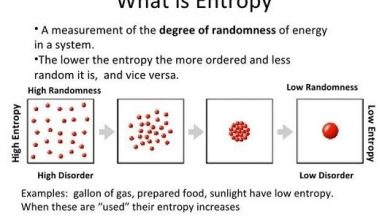What is organizational alignment its importance and Promotion
Organizational alignment
Organizational alignment needs to be seen as a priority in companies, because it is through it that everyone can join forces in favor of healthy growth and the achievement of established goals.
Promoting organizational alignment must be one of the priorities for the company. Through this practice, people are more motivated to carry out their activities, in addition to each employee understanding how their demands contribute to the demands of the team as a whole.
Consequently, the results tend to be more positive, since professionals will perform their tasks with a single purpose — taking into account the macro objectives of the business. organizational alignment
Importance of organizational alignment
Organizational alignment is the agreement between a company’s teams, people and hierarchical levels on the organization’s global objectives.
Through it, each individual will have a clear understanding of the impact of their activities on business results, in addition to analyzing how day-to-day tasks reinforce the organization’s vision, mission and values.
Below, we select some points that benefit from organizational alignment. Check out!
1-Employee motivation and engagement
According to a study conducted by Gallup , only 27% of Brazilian professionals are actively engaged.
In addition, 15% are actively disengaged — that is, in addition to not being satisfied with their roles, they prevent other colleagues from also performing their activities with excellence.
For this reason, it is the role of management to seek strategies and alternatives that bring improvements in this aspect.
Today, just offering salaries that are competitive with the market is not enough for people to be involved with an organization. This is a very important role to ensure talent retention , but not the only one.
There is an interest on the part of employees to assume a relevant role in the company, with the understanding that their work impacts the short and long term results of the business — which makes alignment so important.
2-more productivity
Seeking to increase productivity in companies without affecting the quality of products and services is one of the challenges for most organizations.
Through organizational alignment, leaders will have the opportunity to share information in a clear and relevant way, so that each professional can change their action plans according to the company’s needs.
In addition, there will be a more accurate understanding that business numbers are only achieved through teamwork — encouraging them to seek collective achievements.
3-Solid organizational culture
A company that does not have a solid culture can hardly establish itself in the market with committed people and low turnover rates.
By promoting organizational alignment, professionals will have an understanding not only of the desired results, but also of the organization’s main values and purposes.
Therefore, the recruitment and selection team will increasingly look for professionals who have a cultural fit with the company, contributing to expected turnover rates and to the retention of top talent.
How to promote organizational alignment?
Now that you know about the importance of organizational alignment, we’ll introduce you to some useful practices to promote it. Check out!
1-OKRs
The very definition of OKRs reminds us of the alignment between company and employee: it is a system of collective and individual goals that converge to the global goals of the business.
We can understand this methodology as a reinterpretation of management by goals, popularized in the 2000s by John Doerr, a Google investor — which needs no introduction.
An OKR is composed of a qualitative objective and quantitative key-results . Goals should be aspirational: the more memorable the better. Example: become a reference in content production for the HR team.
Key-results, on the other hand, must be clear metrics and deliverables that will measure whether or not professionals were successful in achieving the objective.
There are some clear differences from OKRs to traditional goals, such as:
- shorter cycles — OKR cycles range from 1 to 6 months, as opposed to traditional goals that are usually annual;
- more transparent — everyone’s OKRs are public within the company (except for more complex job strategies);
- more flexible — they are prepared by the employees themselves, with the support of their leaders and the team as a whole;
- less tied to compensation — this contributes to people looking for more challenging OKRs.
In addition, through the strategic map created from individual and team OKRs, each person will understand how their goals are interconnected with those of colleagues , the team and the company as a whole, promoting more alignment and clarity.
That is, they will be aware of the direction they should follow and more engaged with the day-to-day challenges.
2-one-on-one
One-on-ones are periodic meetings between leaders, led and led, which contribute to a better flow of information from the bottom up, in addition to bringing the relationship between management and employees closer.
In these meetings, the ideal is that the agenda is prepared by the professional himself. In this way, it will bring some of the challenges faced in the completion of its demands, as well as positive points in the execution of the projects.
Therefore, management will have an understanding of how activities are being carried out, making detours whenever necessary and offering feedback to promote the development of talent.
Consequently, the alignment between both will be very positive, precisely for having the opportunity to bring their perceptions on the most diverse points.
Finally, this moment can also be used to follow up on OKRs — understanding what stage they are in — as well as follow up on the person’s career, their goals in the company and their individual development projects .
3-Structuring a workflow
Be sure to structure, together with your employees, a workflow that would be suitable for both the company and the people on the team.
Even if the organization is carrying out remote management , it is important to hold periodic meetings so that each person brings their perceptions regarding the daily demands, so that all employees help in the search for best practices for the activities.
Thus, the team will have clear knowledge of how each colleague’s projects are going, having the opportunity to answer for the entire team regardless of the company’s occasion (results presentation meeting, for example).
4-Setting priorities
Finally, leaders must be attentive to the definition of priorities for their employees.
As we mentioned, this will help people focus on what will really bring a good return to the company in that period, increasing the possibilities for the overall business objectives to be achieved more easily .
In this content, you could understand a little more about organizational alignment, its importance and tips on how to promote it.
Regardless of the strategy adopted, we recommend that the company has good planning, in addition to bringing to the entire team how these practices will contribute to the development of each person.




